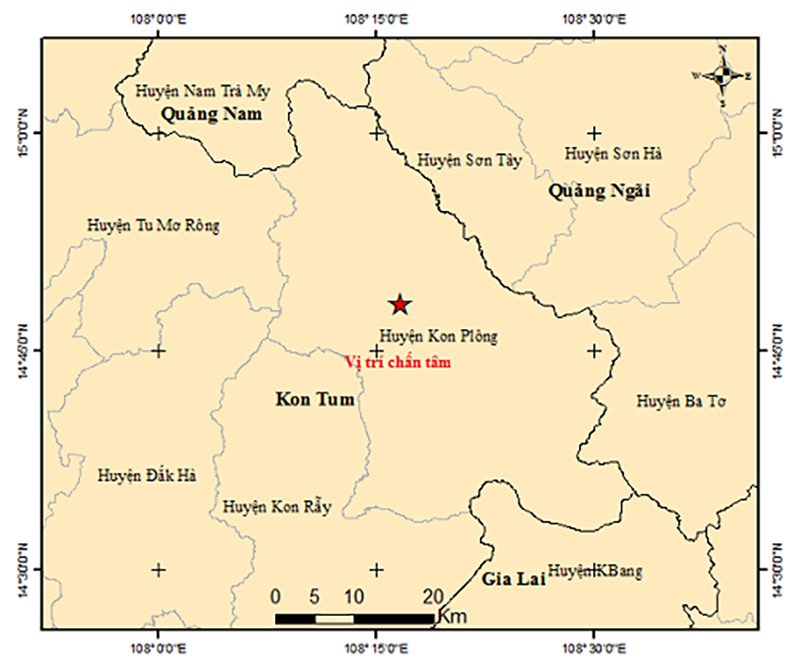
On July 29, Deputy Prime Minister Tran Luu Quang signed a directive from the Prime Minister's Office regarding the inspection and proactive mitigation of earthquake consequences in Kon Plong District, Kon Tum Province.
The directive was sent to the People's Committees of the provinces of Kon Tum, Gia Lai, Quang Ngai, and Quang Nam; the Office of the National Civil Defense Steering Committee; the Ministries of Defense, Public Security, Natural Resources and Environment, Agriculture and Rural Development, Industry and Trade, Transport, and Science and Technology; and the Vietnam Academy of Science and Technology.
The directive cites information from the Institute of Geophysics that multiple earthquakes occurred consecutively in Kon Plong District on July 28 and 29, including a major earthquake at 11:35 a.m. on July 28 with a magnitude of 5.0 and a disaster risk level of 2 at the epicenter and surrounding areas.
This was the strongest earthquake recorded in the area since 1903. Preliminary information indicates that the earthquake caused some damage to housing and affected the psychological well-being of residents, especially those near the epicenter.
The Prime Minister expressed condolences to the affected residents and instructed the Kon Tum provincial government and other local authorities to provide timely information about the earthquakes and aftershocks, guide coping skills, and stabilize the psychological state of residents in the affected areas, especially ethnic minority households.
Local authorities were directed to quickly inspect and assess the damage caused by the earthquakes to residential buildings and infrastructure, promptly carry out rescue and relief operations, and ensure the safety of residents.
The Prime Minister also instructed these localities to proactively organize the evacuation and temporary housing arrangements for households with severely damaged homes, mobilize local forces to assist residents in repairing their homes, and allocate local budgets and mobilize other lawful resources to support heavily affected households and restore essential infrastructure.
Local authorities are to inspect infrastructure, especially irrigation and hydropower dams, and transportation works to detect and respond to any damage or malfunctions, ensuring safety.
The Ministries of Agriculture and Rural Development, Industry and Trade, and Transport were tasked with directing inspections and remedial measures to ensure the safety of dams, reservoirs, and transportation works, especially those near the earthquake epicenter.
The Ministries of Defense and Public Security were instructed to direct local military and police forces to be ready to support earthquake recovery efforts as needed.
The Vietnam Academy of Science and Technology was tasked with directing the Institute of Geophysics to continue monitoring the earthquake and aftershocks, coordinate with relevant agencies, mobilize experts and scientists to clarify the reasons for the unusual increase in earthquakes, and promptly inform authorities and the public to aid communication and response efforts, avoiding panic and instability.
Vietnam Television, Voice of Vietnam Radio, and other media agencies were directed to promptly report on the earthquakes, increase public communication on earthquake response skills, and help reduce panic and damage.
The Ministry of Agriculture and Rural Development and the Office of the National Civil Defense Steering Committee were instructed to closely monitor the situation, proactively direct response, rescue, and recovery efforts, and promptly advise the Prime Minister on handling issues beyond their authority.
Thu Hang